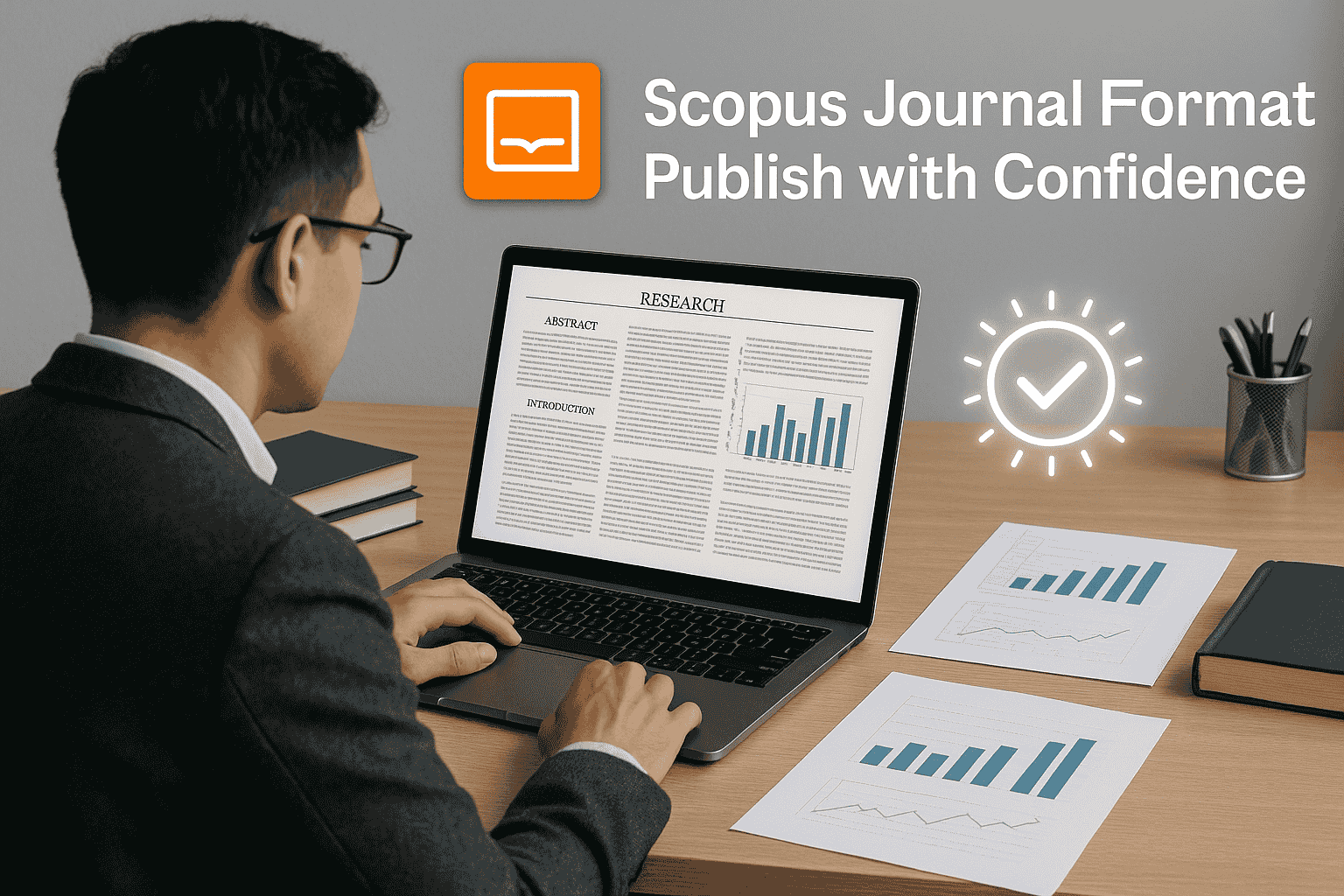 So, you’re ready to publish your research and have your eyes set on a Scopus-indexed journal? First of all, great choice. Scopus is one of the most trusted and widely recognized research indexing platforms out there.
So, you’re ready to publish your research and have your eyes set on a Scopus-indexed journal? First of all, great choice. Scopus is one of the most trusted and widely recognized research indexing platforms out there.
Publishing in a Scopus journal doesn’t just give your work visibility it gives you credibility.
From boosting your academic profile to opening doors for global collaborations and funding, a Scopus publication can seriously level up your research career. But before you hit submit, there’s one thing you absolutely need to get right: formatting.
The Formatting Factor: More Than Just Looks
Let’s get one thing straight: formatting isn’t just about looking neat. It affects how your paper is read, how quickly it moves through peer review, and whether it even makes it to peer review at all.
Most Scopus-indexed journals are highly selective, and if your manuscript doesn’t follow their structure, it can be rejected before anyone reads a single paragraph. That’s why formatting isn’t a final step, it's a first priority.
Essential Structure of a Scopus Research Paper

Here’s what a typical Scopus research paper looks like, section by section:
Title Page
Includes the full title, all author names, affiliations, and contact details of the corresponding author. Some journals also request ORCID IDs.
Abstract
A crisp summary (150–250 words) that outlines the purpose, methods, results, and conclusion. It’s your paper’s elevator pitch.
Keywords
Choose 4–6 searchable terms relevant to your topic. These help with indexing and make your paper easier to find.
Introduction
Sets up the research background, defines the problem, and clearly states the research gap and objective.
Literature Review
Summarizes existing studies and explains how your work builds on or challenges what’s already out there.
Methodology
Explains in detail how the research was conducted, tools used, data collected, procedures followed. Clarity is key here.
Results
This is where you present your findings using tables, charts, or figures. Keep it factual save the interpretation for the next section.
Discussion
Interpret your results. What do they mean? How do they align with previous work? What are the implications?
Conclusion
Wrap it all up. Highlight your key findings, limitations, and suggest directions for future research.
References
Every source cited must be listed accurately and in the required format. No excuses.
Appendices (if applicable)
Additional data, survey questions, or tools that support the paper but are too lengthy to include in the main text.
Don’t Just Write – Format Smart! Top Requirements to Follow
Font Style and Size
Most journals go with Times New Roman or Arial, 12 pt. Stick to what they ask, no creative experiments.
Line Spacing
Usually 1.5 or double-spaced for readability. Check journal-specific guidelines to be sure.
Margins and Alignment
Standard 1-inch margins all around. Text should be justified unless the journal says otherwise.
Referencing Style
Could be APA, MLA, IEEE, or something journal-specific. Use a reference manager so you don’t lose your mind.
Headings and Subheadings
Use a consistent hierarchy (H1, H2, etc.) to break your paper into clean, digestible sections.
Numbering for Figures, Tables, and Sections
Everything should be numbered and titled clearly. Captions go above tables and below figures unless otherwise stated.
Every Journal Has a Style – Follow It
Here’s your golden rule: read the "Instructions for Authors" on the journal’s website. That section is literally the formatting bible. Most Scopus journals provide a downloadable Word or LaTeX template. It’s there to save your time and theirs.
Formatting Pitfalls That Can Ruin a Submission
Avoid these rookie mistakes that can seriously cost you:
Ignoring the Journal’s Structure
A common reason for rejection. Always follow the structure they expect.
Wrong Citation Format
Even one wrong reference style can give off “not serious” vibes. Consistency is everything.
Messy Tables and Figures
No one wants to decode a blurry chart or figure without a title. Label clearly and follow style rules.
Missing Abstract or Keywords
These are required for indexing. Forgetting them is a big no.
No Flow Between Sections
Your paper should read smoothly. Don’t just drop sections one after the other—connect them.
How Expert Formatting Services Can Help
If formatting feels like a nightmare, you’re not alone. Professional or expert help can seriously lighten your load. Formatting services make sure:
-
Your paper meets Scopus journal standards
-
All the fine details (citations, spacing, headings) are spot-on
-
You avoid silly errors that can get your paper tossed
-
You save hours (and your sanity)
Whether you’re submitting for the first time or just want a second pair of expert eyes, this kind of support can make the process smoother and way less stressful.
Quick Pro Tips to Stay Ahead
Save Your File in the Right Format
Most journals prefer DOCX or LaTeX. Always double-check.
Use a Reference Manager
Tools like Mendeley, Zotero, or EndNote make citation life so much easier.
Stay Consistent
Same font, same spacing, same heading style throughout the paper.
Review Published Papers in Your Target Journal
Look at how they’re structured, what tone they use, and how the references are styled.
Conclusion: Format to Get Noticed and Accepted
If you’re aiming to publish in a Scopus-indexed journal, formatting is not optional, it's critical. A paper that follows structure and style not only looks professional but is easier to read, review, and ultimately accept.
So whether you're doing it yourself or reaching out for expert help, get the format right from the start. It'll save you time, reduce rework, and give your research the presentation it truly deserves.
Want to skip the formatting stress? Expert services can help you structure, style, and submit your paper with confidence.